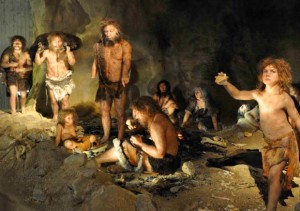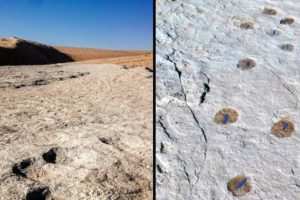
Neanderthals living in what is now France may have used powdered manganese dioxide for fire making purposes, according to a new study published in the journal Scientific Reports.
Excavations at Pech-de-l’Azé I — an archaeological site in the Dordogne region of south-western France that was occupied by Neanderthals 50,000 years ago, several millennia before the first evidence for anatomically modern humans in Europe — and several other Neanderthal sites in France have yielded large numbers of small black ‘blocs.’
The usual interpretation is that these chunks of ‘manganese oxides’ were collected for their coloring properties and used in body decoration, potentially for symbolic expression.
“However, Neanderthals habitually used fire and if they needed black material for decoration, soot and charcoal were readily available, whereas manganese oxides would have necessitated a considerably higher investment in both time and energy to obtain,” said the study’s lead author Dr. Marie Soressi of Leiden University and co-authors.
http://archaeology.sa/wp-content/uploads/2016/03/Manganese-Dioxide.jpg
The researchers argue that Neanderthals at Pech-de-l’Azé I used a specific manganese oxide — manganese dioxide — in fire-making and produced fire on demand.
“Combustion experiments and thermo-gravimetric measurements demonstrate that manganese dioxide reduces wood’s auto-ignition temperature and substantially increases the rate of char combustion, leading us to conclude that the most beneficial use for manganese dioxide was in fire-making,” Dr. Soressi and her colleagues said.
“The Pech-de-l’Azé I blocs would have had to have been ground to powder for use in facilitating fire lighting and there is archaeological evidence for grinding in the form of a grindstone and abraded blocs,” they added.
“Spark-lit tinder with manganese dioxide powder is one simple yet effective means of starting wood fires with substantially lower wood auto-ignition temperatures and high rate of combustion.”















